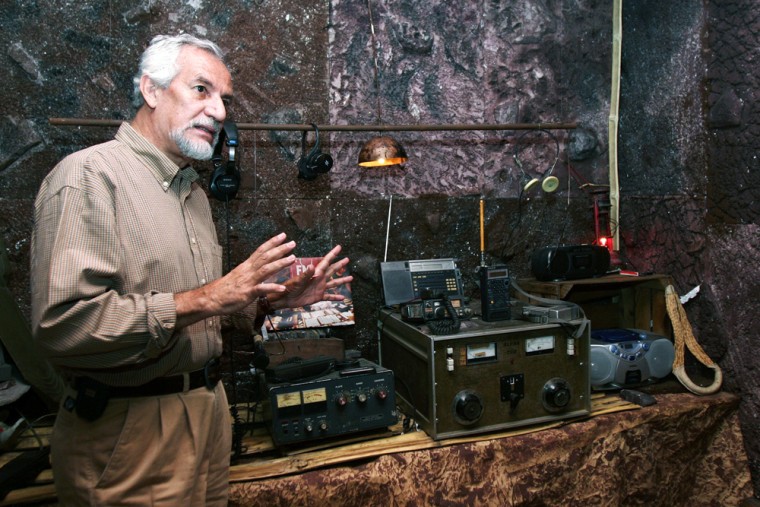Gun fragments, photos, combat plans and mountain hideouts. These are the latest tourist attractions in formerly war-torn El Salvador.
The country has been at peace since 1992. But the 12-year civil war left 76,000 dead, thousands injured and an imprint of violence on the country that residents in economically depressed areas are trying to turn into a profit.
For a fee, former guerrillas will take visitors on tours of former battlefields or mountain hideouts, while museums display war memorabilia. The government has applauded the effort as a way to draw more tourists to El Salvador.
The former Farabundo Marti National Liberation Front, or FMLN, which led the guerrilla uprising, has teamed up with local business leaders to create the so-called "peace route."
The mountain town of Perquin, 175 miles east of San Salvador, was considered the "guerrilla capital" during the fighting, and it served as the FMLN's headquarters. Today, it is home to the "Museum of the Revolution," and features cannons, uniforms, pieces of Soviet weaponry and other weapons of war once used by the FMLN.
"The objective of the museum is simply to serve as a point of historical reference for future generations," said Rolando Caceres, the museum's director.
The museum — a small, adobe house — was founded in the mid-1990s, but has become increasingly popular with visitors, both foreign and Salvadoran.
"We came to learn the real history of our country," said Stephanie Acevedo, on a field trip with 180 other students.
Amanda Navarro, who has lived in New York for the past 35 years, said she hadn't been back to El Salvador for years and "the first thing that I wanted to do was come to the museum." She said she was wanted to know the real story of her country's conflict.
In San Salvador, Carlos Enrique Consalvi, a former announcer for the guerrilla-run "We Will Win Radio," opened his own museum to display video, audio and photos from the conflict. The museum also includes a library and writings about the war.
"This is an independent effort on the part of civil society to contribute something to the history of the country," Consalvi said.
In the northern area of Chalatenango, another group of former guerrillas recently formed a cooperative to restore a series of mountain caves and other bunkers used for everything from hospitals to hideouts. The group even built small cabins for visitors who want to spend the night.
Tourism Minister Ruben Rochi applauds efforts, arguing that anything that promotes tourism in El Salvador is good. The tiny country is the first in Central America to build a tourism industry around its former civil war history.
Between 1996 and 2006, 7.3 million visitors helped generated a record $1.7 billion. Most of those tourists are seeking out El Salvador's beaches, but more and more are becoming interested in the country's infamous past.
